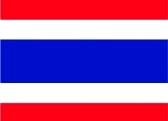All Categories
Grand Canyon Geology (Grand Canyon Association)
Share Tweet








About Grand Canyon Geology
Product Description An Introduction to Grand Canyon Geology offers a new approach to the geologic study of the Grand Canyon with an emphasis on basic geologic principles including plate tectonics, structural features and what they tell us, and the role of erosion in creating landscape. Dozens of photographs enhance and elucidate the text. This book is perfect for both the Grand Canyon visitor and the geology enthusiast. Grand Canyon Conservancy is the official nonprofit partner of Grand Canyon National Park. From the Publisher Proceeds from the sale of this title benefit educational programs at Grand Canyon National Park. About the Author Greer Price received his graduate degree in geology from Washington University in St. Louis. He worked for seven years as a professional geologist, and spent ten years with the National Park Service, most of it at Grand Canyon. His career has involved teaching, writing, and field work throughout much of North America. He is currently senior geologist/chief editor at the New Mexico Bureau of Geology and Mineral Resources in Socorro, New Mexico. Excerpt. © Reprinted by permission. All rights reserved. The Colorado River has carved many canyons along its course, a distance of over 1,400 miles from its headwaters in the Colorado Rockies to its mouth at the Gulf of California. Its Grand Canyon stretches for 277 miles in northern Arizona. Much of the geologic history of the North American continent is revealed in the walls of Grand Canyon and in the high plateaus to its north in what has come to be known as the Grand Staircase. There are deeper canyons and wider river valleys, but nowhere has the combination of bedrock, climate, geologic structure, and history conspired to produce anything quite like Grand Canyon.


















